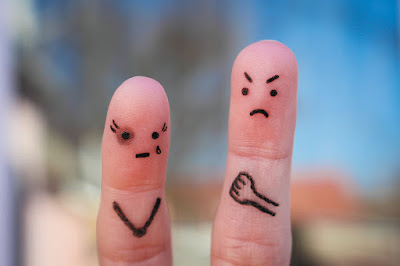By: Ranier Simons, ADAP Blog Guest Contributor
Drug use and drug abuse intersect many aspects of the health journey of substance users and those with substance use disorders. This includes HIV. The complex intersection of HIV and drug use affects HIV acquisition, treatment, and spread. To create solutions with the goal of better health outcomes for those dealing with HIV and substance abuse issues, it is necessary to research and understand how drug use affects the HIV trajectory. It is equally important to understand the barriers in place that hinder effective outreach and care.
 |
| Photo Source: Recovery Research Institute |
Past and present research indicates a higher level of drug use and drug abuse in the population of those living with HIV than to those who are not infected.[1] The drugs include alcohol, crack cocaine, methamphetamines, prescription opioids, and heroin.[2] There is a distinction between drug use and drug abuse. Drug use is more episodic, whereas drug abuse or substance use disorder is consistent and chronic. Regardless of the level of use or addiction, drug use results in suboptimal HIV outcomes.
Substance abuse affects the entire continuum of the HIV care cycle, starting with acquiring infection. Drug use and abuse have been shown to increase the odds of engaging in risky behaviors that lead to infection.[2,3,4] Research shows that being under the influence lowers inhibitions, can result in a higher prevalence of multiple sex partners, and poor judgment resulting in unprotected sex.[2,4] Moreover, injectable drug usage can be a direct path to infection when needle sharing is involved.
A good deal of research has been focused on HIV in MSM (men who have sex with men), given that the rate of HIV infection is higher in this group than in the general population. It is observed that the usage of amyl nitrites, methamphetamine, and club drugs is higher in this group as well.[4] Thus, it is imperative to target this group to curb the transmission of HIV within. Intervention would also benefit the general population since there are MSM who have sex with women.
Recreational or episodic drug use can lead to substance disorders or drug abuse. HIV-positive people dealing with substance disorders have additional challenges. One substance abuse group research has focused on is injection drug abusers. Injectable drug users tend to inject opiates, like heroin, alone or in combination with other drugs, even stimulants such as cocaine.[4] Not only are injectable drug users at a higher risk of contracting and spreading HIV, but they are also more likely to contract other infections.
 |
| Photo Source: CDC |
Regardless of the drug, drug use and abuse exacerbate poor HIV outcomes because it causes additional damage to the body. The drugs are taxing on organs such as the liver, heart, and kidneys. Illicit drug use has also been shown to suppress the immune system.[6] Having a decreased immune response is detrimental to drug users living with HIV. This can lead to a faster progression to adverse HIV outcomes, especially for HIV-positive addicts not on antiretroviral therapy.
Treatment adherence is another intersection of HIV and drug abuse. Research shows that substance abusers on ART have lower treatment adherence. A study from 2007 showed that drug use resulted in a fourfold greater risk of medication adherence failure.[5] Drug use affects cognitive functioning and psychosocial conditioning. Drug addiction makes it difficult to focus on the importance of consistent and timely taking of medication, especially when multiple pills and times are involved. Poor medication adherence can result in subpar treatment response or complete drug resistance.
To improve the outcomes of HIV-positive people with substance abuse issues, it is paramount to remove the stigma of drug use. It should be treated just as any other chronic medical condition. Encouraging a cultural change to remove stigma would result in treating substance abusers with dignity, which could result in self-motivated behavior modification. Stigma against drug abusers sometimes results in medical professionals not dealing with the addiction with compassion and prohibiting infected individuals from seeking consistent care. Stigma also creates policy that hinders people from getting the help they need.
 |
| Photo Source: Wellthy |
Anecdotal and evidence-based research shows that it is best to reach drug-addicted HIV-positive individuals where they are in their journey. They should be treated without the expectation of stopping drug use. Ongoing drug use is not a contraindication for antiretroviral therapy.[3] Educating drug users to understand they can still be on ART while still being on drugs could increase adherence. Reducing stigma could also affect policy change. For example, many politicians are against needle exchange programs. However, needle exchange programs are places that drug-addicted people living with HIV are more likely to visit regularly. They are places where additional services can be provided, including treatment. Handing out clean needles, cookers, and pipes would lower the risk of transmission while also creating a space to meet other needs.
Navigating the intersection of HIV and drug use starts by acknowledging they do not exist in separate vacuums. Drug treatment programs should include HIV testing, and HIV treatment should involve screening for substance abuse.
[1] Shiau, S., Arpadi, S. M., Yin, M. T., & Martins, S. S. (2017). Patterns of drug use and HIV infection among adults in a nationally representative sample. Addictive behaviors, 68, 39–44. https://doi.org/10.1016/j.addbeh.2017.01.015
[2] CDC. (2021, April). HIV and substance abuse. Retrieved from https://www.cdc.gov/hiv/basics/hiv-transmission/substance-use.html
[3] HIV.GOV. (2021, June 3) Considerations for antiretroviral use in special patient populations. Retrieved from https://clinicalinfo.hiv.gov/en/guidelines/hiv-clinical-guidelines-adult-and-adolescent-arv/substance-use-disorders-and-hiv
[4] Strathdee, S., Patterson, T. (2006) Behavioral interventions for HIV-Positive and HCV-Positive drug users. AIDS and Behavior, 10(2), 115-130
[5] Hinkin, C. et al. (2007) Drug use and medication adherence among HIV-1 infected individuals. AIDS and Behavior, 11(2), 185-194
[6] Nnorom-Dike, O., Ekwebelem, O., Ofielu, E., Attah, M., Ekwe, D. (2020, December 9). Long term immunologic consequences of illicit drug abuse. Retrieved from https://www.heraldopenaccess.us/openaccess/long-term-immunologic-consequences-of-illicit-drug-abuse
Disclaimer: Guest blogs do not necessarily reflect the views of the ADAP Advocacy Association, but rather they provide a neutral platform whereby the author serves to promote open, honest discussion about public health-related issues and updates.






